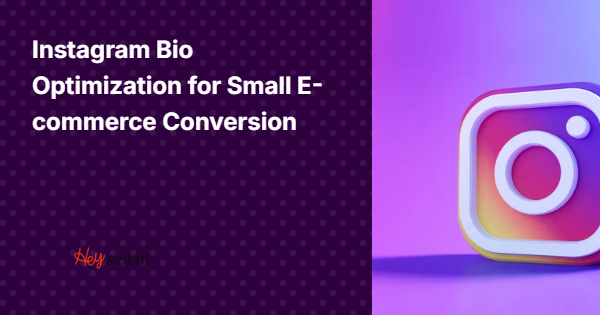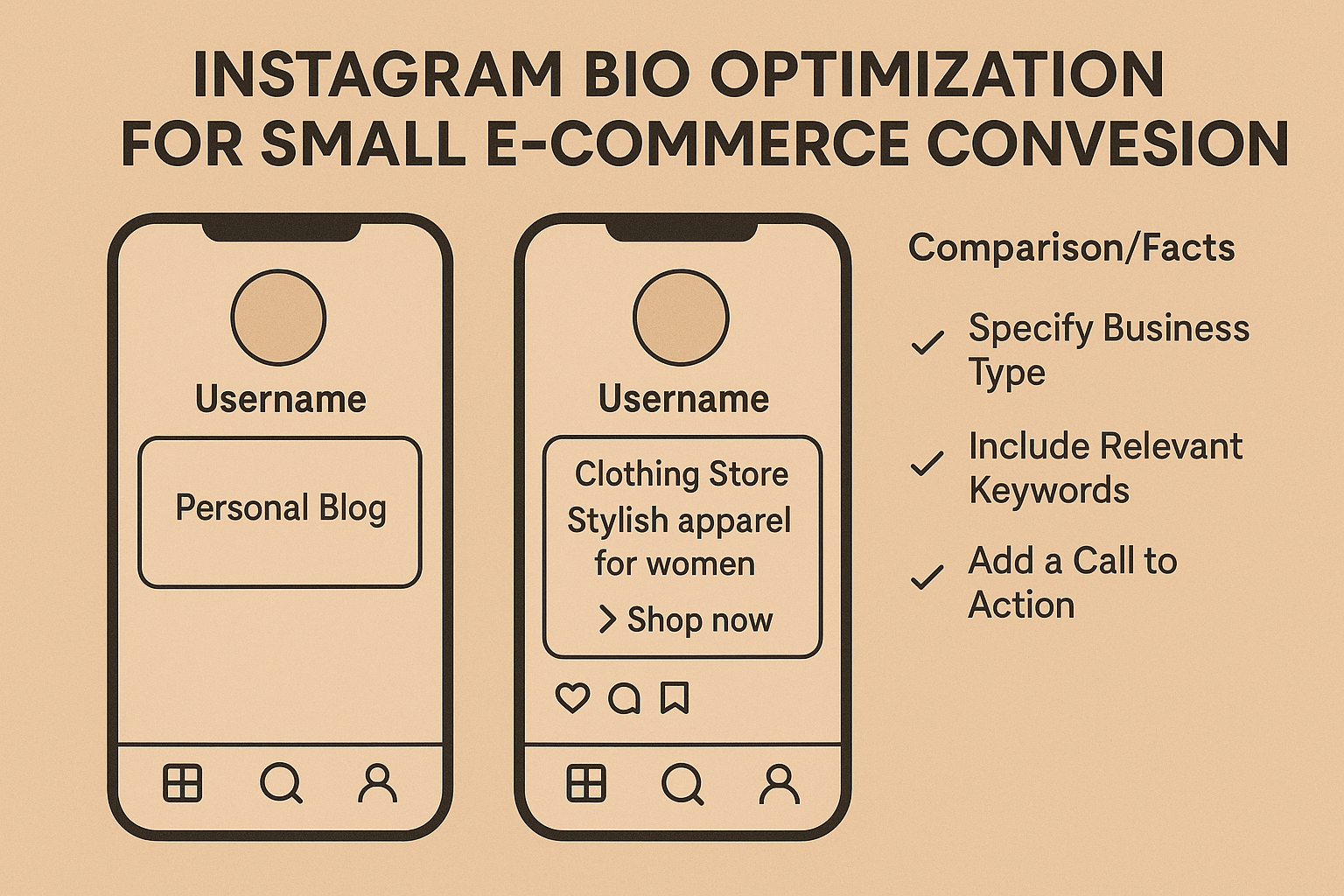Abdullah Usman
You have exactly 3 seconds to convince a potential customer scrolling through Instagram that your e-commerce store is worth their time and money. Your Instagram bio is often the first impression you make, and with over 2 billion monthly active users on the platform, that tiny 150-character space can make or break your conversion rates.
As someone who has spent 8 years optimizing digital presence for e-commerce businesses, I’ve witnessed firsthand how a strategically crafted Instagram bio can increase click-through rates by up to 300% and drive substantial revenue growth. The difference between a generic bio and a conversion-optimized one isn’t just about clever wordplay – it’s about understanding consumer psychology, search behavior, and the technical aspects that mirror successful SEO services strategies.
Why Your Instagram Bio Matters More Than You Think
Your Instagram bio functions similarly to a meta description in traditional SEO audit processes. It’s your elevator pitch, brand statement, and call-to-action all rolled into one compact package. Recent studies show that 70% of Instagram users research products on the platform before making a purchase decision, making your bio a critical touchpoint in the customer journey.
The challenge lies in the constraints. Unlike your website where you can implement comprehensive on-page SEO strategies, Instagram gives you just 150 characters in your bio section to communicate your value proposition. This limitation forces you to think like a conversion rate optimization expert, where every word must serve a purpose.
What Makes an Instagram Bio Convert for E-commerce?
The anatomy of a high-converting Instagram bio mirrors the principles we use in semantic SEO – it’s about context, relevance, and user intent. Your bio needs to answer three fundamental questions within seconds: Who are you? What do you sell? Why should I care?
Successful e-commerce brands like Glossier (@glossier) demonstrate this perfectly. Their bio reads “Beauty products inspired by real life” followed by a clear call-to-action link. This approach generated over 1.8 million followers and contributed to their $1.2 billion valuation, proving that simplicity combined with clarity drives results.
The key difference between businesses that succeed on Instagram and those that struggle often comes down to treating their bio like a landing page headline rather than an afterthought. Just as we optimize title tags for search engines, your Instagram bio needs optimization for social media algorithms and human psychology.
How to Research Your Target Audience’s Language
Before crafting your bio, you need to understand how your ideal customers describe their problems and desires. This research process mirrors the keyword research phase of any comprehensive ecommerce SEO strategy, but adapted for social media context.
Start by analyzing your competitors’ bios and the comments they receive. Look for recurring phrases, questions, and pain points mentioned by their audience. Tools like Instagram Insights provide demographic data about your followers, but the real goldmine lies in the language patterns used in comments and direct messages.
Customer surveys remain one of the most effective methods for gathering bio-relevant insights. Ask your existing customers how they would describe your products to a friend. Their responses often contain the exact phrases that resonate with your target audience – the same principle we apply when conducting local SEO research for businesses targeting specific geographic markets.
The Psychology Behind High-Converting Instagram Bios
Consumer behavior on Instagram follows predictable patterns that smart e-commerce owners can leverage. Users typically scan bios in an F-pattern, similar to how they browse websites, focusing on the beginning and end of text blocks while skimming through the middle.
This scanning behavior explains why successful brands front-load their most compelling benefits. Take Warby Parker (@warbyparker), whose bio leads with “Prescription glasses starting at $95” – immediately addressing the primary concern of cost-conscious consumers. This direct approach contributed to their 50% year-over-year growth and demonstrates how clarity trumps creativity in conversion-focused copy.
The psychological principle of social proof also plays a crucial role. Bios that mention specific achievements, customer counts, or recognition create immediate credibility. However, the key is choosing metrics that matter to your specific audience, much like how we select relevant ranking factors during an SEO audit process.
Crafting Your Value Proposition in 150 Characters
Your value proposition should communicate your unique selling point as concisely as possible. This process requires the same strategic thinking we apply to meta descriptions in on-page SEO – every word must earn its place.
Start by listing your top three business benefits, then distill each into 2-3 words maximum. For example, if you sell organic skincare products, your core benefits might be “chemical-free,” “dermatologist-tested,” and “sustainable packaging.” Your bio could read: “Clean skincare • Dermatologist-tested • Plastic-free packaging 🌱 Shop guilt-free beauty ⬇️”
The most effective e-commerce bios follow a proven formula: Problem + Solution + Social Proof + Call-to-Action. This structure ensures you address customer pain points while guiding them toward the desired action, similar to how we structure landing pages for Shopify SEO optimization.
Strategic Keyword Integration for Instagram Discovery
While Instagram isn’t a traditional search engine, it does use algorithmic systems to surface content to relevant users. Keywords in your bio help Instagram understand your business category and can improve your discoverability in search results.
The key is natural integration rather than keyword stuffing. Instead of cramming terms like “best organic skincare products for sensitive skin,” opt for “Organic skincare for sensitive skin ✨ Gentle formulas that work.” This approach maintains readability while incorporating searchable terms that align with user intent.
Consider how your target audience searches for products like yours. Do they use technical terms or casual language? Are they searching for solutions to specific problems or browsing for inspiration? This user intent research process parallels the semantic SEO approach we use for e-commerce websites, where understanding search context drives keyword selection.
The Art of the Call-to-Action Link
Your bio link represents the bridge between social media engagement and actual sales. Unlike traditional SEO where you can guide users through multiple pages, Instagram forces you to make this single link count.
The most successful e-commerce brands treat their bio link strategically, often using link-in-bio tools like Linktree or creating dedicated landing pages that match their current promotional focus. Fashion brand Reformation (@reformation) regularly updates their bio link to align with seasonal campaigns, driving an average of 25% more traffic to featured products compared to their standard homepage.
Your call-to-action text should create urgency or curiosity without being pushy. Phrases like “Shop the look ⬇️” or “New arrivals daily ⬇️” perform better than generic “Visit website” links because they set clear expectations about what users will find when they click.
Mobile-First Bio Optimization
Since 98% of Instagram users access the platform via mobile devices, your bio must be optimized for small screens. This means prioritizing scannable formatting, strategic emoji use, and consideration of how text displays on various device sizes.
Line breaks become crucial for readability, but Instagram’s formatting limitations require creative solutions. Many successful brands use bullet points (•) or emojis to create visual separation between different bio elements. The key is testing how your bio appears across different devices and screen sizes, similar to how we approach mobile responsiveness in technical SEO audits.
Consider using emojis strategically to replace words where possible. A single emoji can convey meaning while saving precious character space. However, avoid emoji overuse, which can make your bio appear unprofessional or difficult to read.
Measuring and Optimizing Your Bio Performance
Like any SEO strategy, Instagram bio optimization requires ongoing measurement and refinement. Instagram Insights provides valuable data about profile visits, website clicks, and reach, but the real metrics that matter are conversion-related.
Track the correlation between bio changes and key performance indicators like click-through rates to your website, email sign-ups, and ultimately, sales. Set up UTM parameters for your bio link to understand how Instagram traffic behaves compared to other sources – this data often reveals insights that inform broader digital marketing strategies.
A/B testing different bio variations can provide concrete data about what resonates with your audience. Test one element at a time – your value proposition, call-to-action, or emoji usage – and measure performance over 7-14 day periods to account for algorithm fluctuations.
Common Instagram Bio Mistakes That Kill Conversions
The biggest mistake I see e-commerce businesses make is treating their Instagram bio like a traditional business card. Listing every service, location, and contact method creates confusion rather than clarity. Remember, your bio should guide users toward one primary action, not overwhelm them with options.
Another conversion killer is using industry jargon or overly creative language that confuses rather than clarifies. Your bio should be instantly understandable to someone who has never heard of your brand before. This clarity principle applies whether you’re optimizing for search engines or social media algorithms.
Neglecting to update your bio regularly is another common oversight. Your Instagram bio should evolve with your business, reflecting current promotions, seasonal offerings, or new product launches. Static bios miss opportunities to capitalize on trending topics or timely offers that could drive immediate sales.
Action Points for Immediate Implementation
Start by auditing your current bio using the framework outlined above. Does it clearly communicate who you are, what you sell, and why someone should care? If not, begin with a complete rewrite focusing on your primary value proposition.
Research your top five competitors’ bios and identify patterns in their messaging, formatting, and call-to-action strategies. Look for gaps in their approach that you can exploit or successful elements you can adapt for your brand.
Create a bio testing schedule where you experiment with different variations monthly. Document changes and correlate them with performance metrics to build a database of what works for your specific audience and industry.
Set up proper tracking for your bio link clicks and establish benchmarks for improvement. Without measurement, optimization becomes guesswork rather than strategic decision-making.
Your Instagram Bio as a Revenue Driver
Your Instagram bio represents one of the highest-impact, lowest-cost optimization opportunities in your digital marketing arsenal. Unlike complex SEO services that require ongoing technical expertise, bio optimization is something you can implement and test immediately.
The businesses that succeed on Instagram understand that their bio isn’t just a description – it’s a conversion tool that should be optimized with the same strategic approach used for high-performing landing pages. By applying these principles consistently and measuring results, you can transform your Instagram presence from a simple social media account into a significant revenue driver for your e-commerce business.
Remember, the goal isn’t just to gain followers, but to attract the right followers who are likely to become customers. A well-optimized Instagram bio does exactly that – it filters out casual browsers while attracting genuinely interested prospects who are ready to take action.


